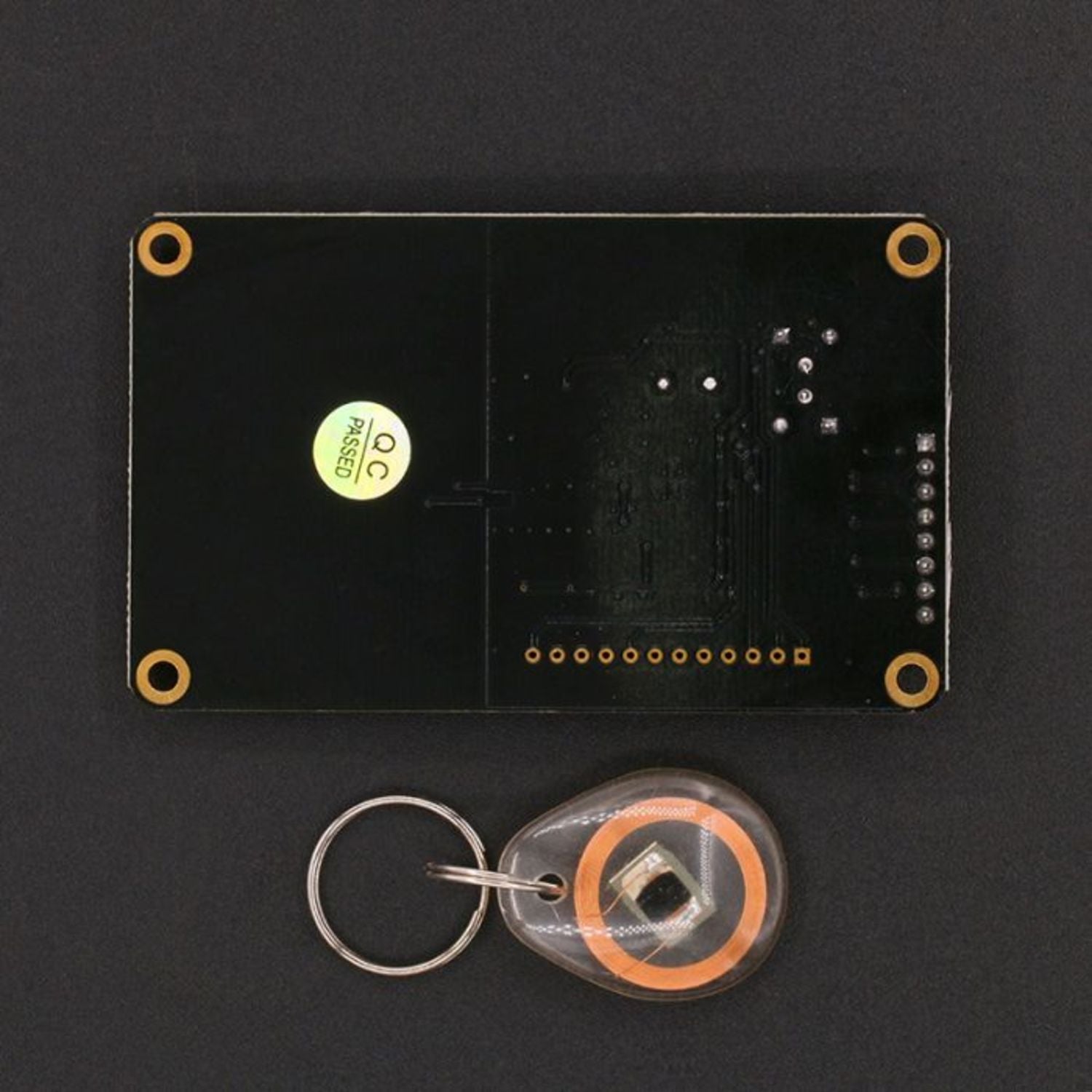This NFC/RFID breakout module is built around the PN532, the most well - loved NFC chip found in almost every NFC - enabled phone or device. It's a real all - rounder! You can read from and write to tags and cards, communicate with phones for payment processing, and even make it act like an NFC tag. Ideal for any embedded NFC project! The PN532 is extremely flexible. You can use 5V TTL UART at any baud rate, I2C, or SPI to communicate with it. It's strongly supported by libnfc. Just plug in an FTDI cable and use the FTDI serial port device to start NFC development on any Linux, Mac, or Windows computer. The package includes the PN532 breakout board with a tuned 13.56MHz stripline antenna, a 0.1' header, 2 jumpers/shunts, and a 4050 level shifter chip. You'll also get a Mifare Classic 1K card for free! You can choose the UART, IIC, or SPI interface via SWITCH - 0 and SWITCH - 1. Key features: Compatible with Arduino, AVR, ARM, etc., no soldering needed. Has SPI/I2C interfaces selectable by SWITCH - 0 and SWITCH - 1. Comes with a built - in PCB antenna. Operates at 5V. Dimensions are 85mm x 52mm. Resources available: user guide, video tutorial, datasheet, schematic, SPI demo, IIC demo, NXP PN532 App Note, Nokia's Introduction to NFC, RFID selection guide, and NXP PN532 User Manual.


Using this NFC/RFID breakout module is a breeze. First, decide which communication interface you want to use - UART, I2C, or SPI. You can select the interface by using SWITCH - 0 and SWITCH - 1. If you're using it with a computer, plug in an FTDI cable and use the FTDI serial port device to communicate. The module is compatible with Arduino, AVR, ARM, etc., so you don't need to worry about compatibility issues, and there's no soldering required. When handling the module, be gentle with the built - in PCB antenna. Avoid bending it or getting it wet. Keep the module in a dry and cool place to ensure its performance. If you want to do payment processing or tag reading/writing, make sure the Mifare Classic 1K card is within the range of the antenna. For more detailed information, refer to the user guide and datasheet provided with the product.